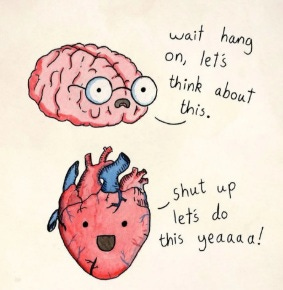Emotional Code Wins
If you’re reading this, chances are you’ve got a side project brewing—maybe it’s a SaaS tool, a browser extension, a mobile app, or even a micro-SaaS you’re hacking on after hours. You’ve poured late nights and weekends into shipping features, squashing bugs, and making something you’re proud of. But here’s the uncomfortable truth: just because your product is “better” on paper doesn’t mean people will switch to it.
I know, it stings. You’ve probably seen it happen—maybe it’s happening to you right now. You launch, you post on Product Hunt, you share in dev communities, and you wait for the flood of users… but it’s more like a trickle. You look at your competitors and think, “How are they winning users with a clunkier, less powerful product?” The answer isn’t in the code or the feature list. It’s in the connection.
Let’s dig into why emotional resonance is the secret ingredient that gets people to take a chance on your project—and how you can start building it into everything you do.
The Myth of the “Better Product”
As coders, we love logic. We love benchmarks, performance stats, and elegant architectures. We assume that if we build something faster, cleaner, or more robust, users will flock to it. But most users aren’t comparing your product feature-for-feature. They’re not running your app through a battery of tests. They’re looking for something that “just feels right”—something that solves a pain they actually feel, or speaks to a dream they actually have.
Remember: People don’t switch because your product is better on paper. They switch because your story, your message, or your vibe makes them feel like you get them.
The Real Reason People Switch: Pain, Hope, and the Search for “Better”
Think about the last time you switched tools. Was it because you read a spec sheet and saw a 12% performance improvement? Or was it because you were frustrated—maybe even a little desperate—for something that made your life easier, less annoying, or more fun?
When you talk to early users, you’ll hear phrases like:
“I was so fed up with X, I just had to try something new.”
“I saw your post and it felt like you were describing my exact problem.”
“I didn’t even know I needed this, but now I can’t imagine going back.”
That’s not logic talking. That’s emotion. That’s the feeling of being seen, understood, and offered a real way out of a pain point.
The Feature Trap: Why Stacking Up Features Won’t Win Early Users
It’s tempting to play the feature comparison game. You build something, you look at the competition, and you start listing all the ways your project is “better.” Maybe you have more integrations, a slicker UI, or a clever workflow automation. But here’s the thing: early users aren’t looking for a laundry list. They’re looking for a solution that feels like it was made for them.
When you pitch your project, don’t just stack up features. Dig into what really drives your users:
What’s the moment that makes them throw up their hands and say, “There has to be a better way”?
What are they secretly hoping for—a tool that saves them time, makes them look good, or just lets them enjoy their work again?
What’s the story they tell themselves about why they’re stuck, and what would make them feel unstuck?
If you can answer those questions, you’re already ahead of 90% of side project founders.
How to Find the Emotional Hook for Your Side Project
So how do you actually connect with users on that emotional level? Here’s a step-by-step approach that works, even if you’re just starting out:
1. Talk to Real People (Not Just in Your Head)
It’s easy to assume you know what users want. But the gold is in real conversations. Reach out to people who fit your target user profile. Ask them about their day-to-day. What frustrates them? What do they wish existed? What’s the worst part of their workflow?
Don’t pitch—just listen. Take notes. Look for the moments when their voice changes, when they get animated or annoyed. That’s where the pain is real.
2. Look for the “There Has to Be a Better Way” Moment
Every great product starts with a moment of frustration. Maybe it’s a dev who’s tired of copy-pasting boilerplate code. Maybe it’s a freelancer who’s lost in a sea of invoices. Maybe it’s a team lead who can’t get a straight answer from their project management tool.
Find that moment. Name it in your messaging. When users see you describing their exact pain, they’ll feel like you’re in their corner.
3. Tell a Story, Not Just a Spec Sheet
When you write your landing page, your launch post, or even your README, tell a story. Paint a picture of the pain, the struggle, and the relief your project brings. Use language your users actually use—not just marketing buzzwords.
Example:
Instead of “Our tool offers 24/7 automated monitoring with advanced alerting,” try “Never get blindsided by a server crash at 2am again. We’ll wake you up before your users notice.”
4. Show Empathy: “I’ve Been There Too”
If you built your project to scratch your own itch, say so! People love knowing that you’ve walked in their shoes. It’s way more compelling than a faceless company pitching a generic solution.
Example:
“I built this because I was tired of wasting hours on manual deployments. If you’ve ever felt that pain, this is for you.”
5. Invite Feedback—and Actually Listen
Early users love being part of the journey. Ask for their feedback. Let them know their input shapes the roadmap. When they see you listening and iterating, they’ll become your biggest advocates.
Real-World Examples: Emotional Hooks in Action
Let’s look at a few side projects that nailed the emotional connection:
1. Plausible Analytics
Instead of pitching “privacy-friendly analytics” as just a feature, Plausible speaks directly to devs who are tired of bloated, invasive analytics tools. Their message: “Google Analytics is overkill. Plausible is simple, lightweight, and respects your users’ privacy.” They tap into frustration (complexity, privacy concerns) and hope (a simpler, cleaner alternative).
2. Tuple
Tuple isn’t just a remote pair programming tool. Their landing page says, “We’re tired of laggy, unreliable tools that get in the way of real collaboration.” They talk about the pain of remote work and the joy of finally having a tool that “just works.” It’s not about features—it’s about feeling understood.
3. Notion
Notion’s early messaging wasn’t about being the “most powerful” tool. It was about empowering people to “organize your life, your way.” They tapped into the emotional need for control and clarity in a chaotic digital world.
How to Build Emotional Resonance Into Your Side Project
Here are some practical ways to make your project speak to the heart:
1. Use User Quotes and Stories
If you’ve got even a handful of users, ask them for their stories. Put their quotes front and center on your landing page. Let new visitors see themselves in those stories.
2. Write Like a Human, Not a Robot
Drop the jargon. Use words your users actually say. If you’re building for devs, talk like a dev. If you’re building for freelancers, talk about late invoices, coffee shop Wi-Fi, and the hustle.
3. Show the Faces Behind the Project
People connect with people, not products. Put your face, your story, and your journey out there. Share your struggles and wins. Invite users to join you.
4. Make Onboarding Personal
When someone signs up, send a personal note. Ask what they’re hoping to get out of your tool. Offer to jump on a quick call. The more personal you make it, the more likely they are to stick around.
5. Celebrate Small Wins
Share your milestones, thank your early users, and celebrate the progress you’re making together. Let users feel like they’re part of something growing and exciting.
Why This Matters: The Long Game
You might be thinking, “This all sounds great, but I just want users!” Here’s the thing: Users who feel emotionally connected to your project become your best marketers. They tell their friends, they tweet about you, they stick with you through bugs and pivots.
Features can be copied. Emotional connection can’t.
When you win people’s hearts, you build something lasting. You create a community, not just a customer list.
Common Mistakes (and How to Avoid Them)
Let’s be real—most side project founders fall into a few traps:
1. The Feature Dump
You list every feature you’ve built, hoping something will stick. Instead, focus on the one pain point you solve better than anyone else.
2. The “If You Build It, They Will Come” Fallacy
You launch and wait, but users need a reason to care. Give them a story, a vision, and a sense that you get what they’re going through.
3. Ignoring Feedback
You get feedback, but you ignore it or get defensive. Instead, treat every piece of feedback as a gift. It’s a chance to connect and improve.
Bringing It All Together: Your Next Steps
If you’re building a side project right now, here’s what you can do today:
Talk to three potential users this week. Ask about their frustrations and dreams. Listen more than you talk.
Rewrite your landing page headline. Make it about the user’s pain or hope, not just your features.
Share your story. Post on Twitter, Indie Hackers, or your blog about why you built this project and what you hope it will change.
Invite feedback. Let users know you’re listening and that their input matters.
Celebrate your early adopters. Thank them publicly, feature their stories, and make them feel like insiders.
Final Thoughts: Build for People, Not Just Users
At the end of the day, every side project is a bet on people. You’re not just writing code—you’re solving real problems for real humans. If you can make your users feel seen, heard, and understood, you’ll win more than just early traction. You’ll build something that matters.
So the next time you’re tempted to add another feature, ask yourself: “How does this make my users’ lives better? How does it make them feel?” If you can answer that, you’re on the right track.
Happy building—and remember, speak to the heart, not just the head. Your future users will thank you.
P.S. If you’ve got a story about connecting with your early users (or struggling to!), I’d love to hear it. Drop a comment or reach out—let’s learn from each other and keep building projects that make a real difference.



